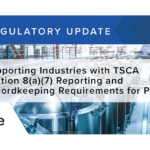
Travis County Phase 1 Environmental Site Assessments play a crucial role in ensuring the safety and sustainability of properties in the county. These assessments, conducted by qualified environmental professionals, aim to identify potential environmental contamination and assess the risks associated with a property before any development or property transaction takes place.
Understanding Phase 1 Environmental Site Assessments
Before delving into the specifics of Travis County’s approach to environmental site assessments, it is important to understand the purpose and key components of Phase 1 assessments. These assessments are designed to provide an overview of potential environmental liabilities associated with a property. By identifying Recognized Environmental Conditions (RECs), Phase 1 assessments enable developers, property owners, and investors to make informed decisions regarding land use, redevelopment, and property transactions.
Purpose of Phase 1 Assessments
The primary purpose of Phase 1 Environmental Site Assessments is to assess the potential for contamination and environmental risks present on a property. These assessments identify if any past or current activities conducted on the property may have impacted the environment. The findings of a Phase 1 assessment help determine whether further investigation or remediation is necessary, providing a foundation for informed decision-making.
Key Components of the Assessment Process
A Phase 1 Environmental Site Assessment involves a comprehensive process that includes several key components. This includes a meticulous examination of historical records, interviews with past and present property owners, occupants, and government officials. Field observations and laboratory analyses are also conducted to gain a comprehensive understanding of the potential environmental risks pertaining to the property.
One important aspect of the assessment process is the examination of historical records. This involves researching the property’s previous uses and activities, such as industrial operations, waste disposal practices, or storage of hazardous materials. By studying these records, environmental professionals can identify any potential sources of contamination and assess the level of risk they pose.
In addition to historical records, interviews play a crucial role in gathering information for Phase 1 assessments. Environmental consultants will conduct interviews with current and past property owners, occupants, and government officials to gain insights into the property’s history and any known environmental issues. These interviews provide valuable firsthand knowledge and can help uncover hidden environmental risks that may not be evident through other means.
Field observations are another important component of Phase 1 assessments. Environmental professionals will visit the property and conduct a thorough visual inspection, looking for signs of potential contamination or environmental hazards. They will examine the surrounding area, drainage patterns, and any visible signs of pollution or contamination. These field observations provide valuable context and help in assessing the potential risks associated with the property.
Finally, laboratory analyses are conducted as part of the Phase 1 assessment process. Samples of soil, groundwater, and other relevant materials are collected and sent to accredited laboratories for analysis. These laboratory tests help determine the presence and concentration of contaminants, providing crucial data for evaluating the environmental condition of the property.
The Role of Travis County in Environmental Assessments
Travis County has established regulations and guidelines to ensure that environmental assessments are conducted according to standardized procedures. These regulations serve to protect the county’s natural resources while promoting sustainable development and safe property transactions.
County Regulations and Guidelines
Travis County has guidelines in place to facilitate the consistent implementation of Phase 1 Environmental Site Assessments. Property owners and developers are required to adhere to these regulations to ensure that environmental risks are adequately addressed. These guidelines also outline the information that needs to be included in the assessment reports submitted to the county authorities.
Interaction with State and Federal Environmental Agencies
Travis County collaborates with state and federal environmental agencies to ensure that the environmental assessments align with broader environmental goals and regulations. These collaborations facilitate the exchange of information and expertise, leading to a more comprehensive evaluation of potential environmental risks associated with a property.
Steps Involved in Travis County Phase 1 Environmental Site Assessments
The process of conducting a Phase 1 Environmental Site Assessment in Travis County follows a structured approach involving several essential steps. These steps help provide a comprehensive understanding of the potential environmental risks associated with a property.
Initial Site Inspection
During the initial site inspection, environmental experts conduct a thorough examination of the property. They assess the site’s overall condition and identify any visibly noticeable environmental concerns, such as evidence of spills or contaminated areas. This step provides the groundwork for further investigation.
Historical Research of the Site
Historical research is a critical aspect of Phase 1 assessments. Investigators dive into historical documents, maps, aerial photographs, and other available records to identify any potential sources of contamination or previous land use practices that may have contributed to environmental risks.
Report Compilation and Findings
Upon completion of the assessment, a comprehensive report is compiled, documenting the findings and conclusions. This report includes information on the property’s history, potential RECs identified, and recommendations for further assessment or remediation, if necessary. The report is submitted to the appropriate county authorities for review and further decision-making.
Potential Outcomes and Implications of Phase 1 Assessments
Phase 1 Environmental Site Assessments have significant implications for property transactions and development decisions. The identification of Recognized Environmental Conditions (RECs) through these assessments can impact the future use or value of a property.
Identifying Recognized Environmental Conditions (RECs)
One of the core objectives of a Phase 1 assessment is to identify RECs, which are indications of potential environmental contamination or risks. The presence of RECs can impact the property’s marketability, financing options, and insurance coverage. Additionally, the identification of RECs could potentially trigger the requirement for a Phase 2 Environmental Site Assessment.
Impact on Property Transactions
The findings of a Phase 1 assessment inform property buyers and lenders about potential environmental concerns. These assessments offer a level of protection by allowing parties involved in property transactions to make informed decisions regarding the purchase, redevelopment, or financing of a property. In some cases, remediation measures may be necessary before a property transaction can proceed.
Future Perspectives: Phase 2 Environmental Site Assessments
While Phase 1 assessments provide a preliminary evaluation of potential environmental risks, Phase 2 Environmental Site Assessments delve deeper to confirm the presence or absence of contamination on a property.
When is a Phase 2 Assessment Necessary?
A Phase 2 assessment is typically recommended if a Phase 1 assessment identifies RECs or other factors that indicate a higher likelihood of contamination. Phase 2 assessments involve in-depth sampling and analysis to assess the extent and nature of any contamination, helping property owners and developers understand the potential risks more accurately.
Differences between Phase 1 and Phase 2 Assessments
The primary difference between Phase 1 and Phase 2 assessments lies in the level of investigation. Phase 1 assessments provide a broad overview, whereas Phase 2 assessments involve targeted sampling and analysis. The results of Phase 2 assessments can guide informed decision-making regarding site remediation and development plans.
In conclusion, Travis County Phase 1 Environmental Site Assessments are a critical step in ensuring the safety and sustainability of property transactions and development in the county. These assessments, with their comprehensive analysis and identification of potential environmental risks, enable stakeholders to make informed decisions and take necessary actions to protect the environment and public health.
If you’re ready to move forward with a Phase 1 Environmental Site Assessment in Travis County, or if you require further environmental services, ESE Partners is here to guide you through the process. As experts in environmental science and engineering, we specialize in providing comprehensive solutions tailored to your specific needs. Whether it’s due diligence for a real estate transaction, water compliance, or navigating the new USACE review process in Galveston County District, our team is equipped to deliver honest, quality-driven results. Don’t let environmental challenges slow down your business progress. Request A Proposal today and partner with ESE Partners for responsible and efficient environmental problem-solving.








